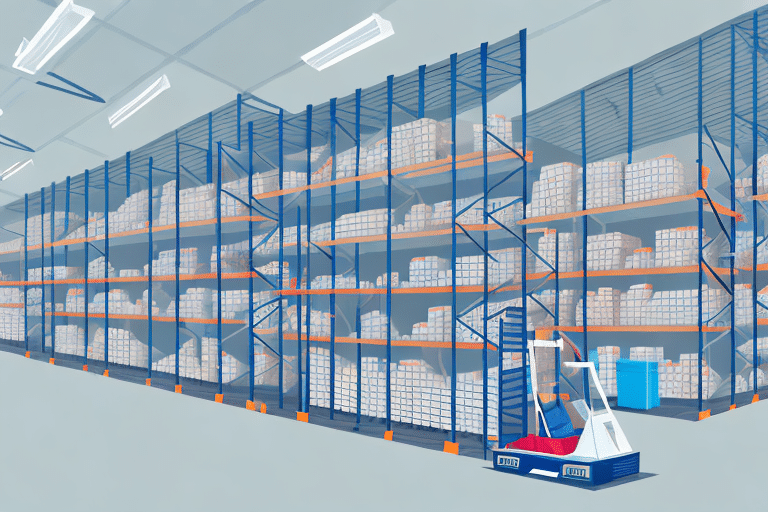Advantages and Disadvantages of Splitting Your Inventory
Splitting your inventory can significantly impact both your operational costs and sales performance. Understanding the benefits and drawbacks is essential before making a strategic decision.
Benefits of Inventory Splitting
- Reduced Shipping and Handling Costs: By positioning products closer to your customers, you can lower shipping fees and decrease delivery times. This is especially beneficial for large or bulky items, enhancing customer satisfaction and potentially increasing repeat business.
- Market-Specific Inventory: Tailoring your inventory to meet the demands of specific regions allows for more targeted marketing and product offerings, which can lead to increased sales and market penetration.
- Improved Customer Experience: Faster delivery times and localized stock can enhance the overall customer experience, leading to higher customer retention rates.
- Risk Mitigation: Distributing inventory across multiple locations can reduce the risk of stockouts and supply chain disruptions caused by regional issues.
Drawbacks of Inventory Splitting
- Increased Operational Costs: Establishing and maintaining additional warehouses or distribution centers involves significant upfront and ongoing expenses, including rent, utilities, and staffing.
- Complex Inventory Management: Managing stock levels across multiple locations can lead to complexities in tracking, forecasting, and replenishing inventory, increasing the likelihood of errors.
- Supply Chain Coordination Challenges: Coordinating with multiple suppliers and logistics partners can complicate the supply chain, potentially leading to delays and inconsistencies in product quality.
- Higher Overhead Costs: Additional facilities require more resources, which can strain financials if the increased sales from inventory splitting do not offset these costs.
Carefully evaluating these advantages and disadvantages is crucial to determine if inventory splitting aligns with your business goals and operational capabilities.
Key Factors to Consider Before Splitting Your Inventory
Before deciding to split your inventory, it's vital to assess several critical factors to ensure the strategy will be beneficial for your business.
Sales Data Analysis
Examine your sales data to identify which regions generate the most revenue. High-performing markets may justify the investment in localized inventory to better serve those customers. According to a study by Business.org, businesses that utilize detailed sales data can improve inventory allocation by up to 20%.
Logistical Considerations
Determine how your inventory will be divided and the number of distribution centers required. Assess the logistical challenges, including transportation costs, delivery times, and the infrastructure needed to support multiple locations.
Supply Chain Impact
Evaluate how splitting inventory will affect your supply chain. This may involve collaborating with additional suppliers or manufacturers, which can impact lead times and quality control. Ensuring your supply chain can handle these changes is essential for a smooth transition.
Cost-Benefit Analysis
Conduct a thorough cost-benefit analysis to compare the potential savings from reduced shipping costs against the increased expenses of additional warehousing and management. Tools like the Cost-Benefit Analysis can aid in making informed decisions.
Impact of Inventory Splitting on Your Business Operations
Splitting your inventory affects various aspects of your business operations, from lead times to supply chain dynamics.
Lead Time Adjustments
With inventory located in multiple regions, lead times can vary based on the proximity to customers. While this can reduce delivery times for some orders, it may introduce variability that needs to be managed effectively.
Order Fulfillment Efficiency
Managing orders from multiple locations requires robust systems to ensure accuracy and efficiency. Implementing advanced inventory management software can help mitigate potential fulfillment issues.
Supply Chain Modifications
Inventory splitting may necessitate changes to your supply chain, including the integration of new suppliers and logistics partners. This can be a complex process that requires careful planning and execution.
Potential Benefits
- Cost Savings: Reduced shipping costs and optimized inventory levels can lead to significant savings over time.
- Enhanced Inventory Management: Allocating stock based on regional demand helps prevent overstocking and stockouts, ensuring optimal inventory turnover.
Balancing these operational impacts with the potential benefits is key to a successful inventory splitting strategy.
The Role of Market Research in Inventory Splitting Decisions
Comprehensive market research is fundamental when considering inventory splitting, providing insights that inform strategic decisions.
Understanding Regional Demand
Market research helps identify the specific needs and preferences of customers in different regions. This data enables businesses to tailor their inventory to meet localized demand effectively.
Competitive Analysis
Analyzing competitors within various markets can reveal gaps and opportunities. Understanding where competitors are strong or weak allows businesses to position their products more strategically.
Identifying Market Trends
Staying informed about emerging trends ensures that your inventory remains relevant and can adapt to changing consumer behaviors. According to a Nielsen report, businesses that leverage market trends are 30% more likely to outperform their competitors.
Strategic Decision-Making
Data-driven insights from market research support informed decision-making, reducing the risk associated with inventory splitting and enhancing the likelihood of success.
Analyzing Sales Data to Inform Inventory Splitting
Sales data analysis is a critical component in determining whether inventory splitting is the right strategy for your business.
Demand Forecasting
By analyzing historical sales data, businesses can forecast future demand in different regions, ensuring that inventory levels are appropriately aligned with market needs. Effective demand forecasting can reduce the chances of overstocking or stockouts.
Identifying Sales Trends
Recognizing patterns such as seasonal fluctuations or regional preferences allows for more precise inventory allocation. For instance, a surge in sales during holiday seasons in specific areas can justify increased inventory in those regions.
Optimizing Inventory Allocation
Sales data helps in distributing inventory where it is most needed, enhancing inventory turnover rates and maximizing sales potential. Tools like Tableau can assist in visualizing and analyzing sales data effectively.
Reducing Operational Risks
Data-driven decisions minimize the risks associated with inventory mismanagement, ensuring that inventory splitting does not lead to financial losses or diminished customer satisfaction.
Evaluating Your Supply Chain for Inventory Splitting
Before implementing an inventory splitting strategy, it's essential to assess your current supply chain's capacity to handle the changes.
Assessing Current Processes
Review your existing warehousing, distribution, and logistics processes to identify areas that may require adjustments or enhancements to support multiple inventory locations.
Supplier Capability
Ensure that your suppliers can meet increased demands and maintain quality standards across different regions. Building strong relationships with reliable suppliers is crucial for seamless operations.
Logistics and Transportation
Evaluate your transportation infrastructure to handle the distribution of inventory from multiple centers. Efficient logistics are vital to maintaining product availability and timely deliveries.
Risk Management
Identify potential risks such as supply chain disruptions, and develop contingency plans to mitigate these challenges. A resilient supply chain supports successful inventory splitting.
Cost-Benefit Analysis of Splitting Your Inventory
Conducting a detailed cost-benefit analysis is essential to determine the financial viability of inventory splitting.
Calculating Costs
- Warehousing Expenses: Costs associated with leasing or purchasing additional warehouse space, including utilities and maintenance.
- Operational Costs: Expenses related to staffing, inventory management systems, and logistics coordination.
- Transportation Costs: Increased transportation expenses from distributing inventory across multiple locations.
Assessing Benefits
- Increased Sales: Potential for higher sales due to improved product availability and faster delivery times.
- Cost Savings: Reduced shipping costs and optimized inventory levels can lead to long-term savings.
- Enhanced Customer Satisfaction: Better service levels can result in higher customer retention and positive reviews.
Return on Investment (ROI)
Evaluate the expected ROI by comparing the total costs against the projected benefits. A positive ROI indicates that inventory splitting may be a financially sound strategy for your business.
Break-Even Analysis
Determine the break-even point to understand how long it will take for the benefits of inventory splitting to outweigh the associated costs. This analysis helps in setting realistic financial expectations.
Best Practices for Implementing an Inventory Splitting Strategy
Adopting best practices ensures a smooth and effective transition when splitting your inventory.
Develop a Comprehensive Plan
Create a detailed implementation plan outlining the steps, timelines, and resources required. A well-structured plan minimizes disruptions and facilitates coordinated efforts across departments.
Invest in Technology
Utilize advanced inventory management and logistics software to track stock levels, manage orders, and streamline operations across multiple locations. Solutions like SAP Inventory Management can enhance efficiency and accuracy.
Train Your Team
Ensure that your staff are adequately trained to handle new processes and technologies. Comprehensive training programs can improve productivity and reduce the likelihood of errors.
Communicate with Stakeholders
Maintain clear and consistent communication with all stakeholders, including employees, suppliers, and customers. Transparent communication fosters trust and facilitates cooperation during the transition.
Monitor and Adjust
Regularly monitor the performance of your inventory splitting strategy and be prepared to make adjustments as needed. Continuous improvement ensures that the strategy remains effective and aligned with your business objectives.
Common Mistakes to Avoid When Splitting Your Inventory
Avoiding common pitfalls can enhance the success rate of your inventory splitting initiative.
Inadequate Planning
Failing to develop a comprehensive plan can lead to operational inefficiencies and increased costs. Invest time in strategic planning to anticipate challenges and outline solutions.
Overlooking Data Analysis
Neglecting to analyze sales and market data can result in poor inventory allocation, leading to stockouts or excess inventory. Data-driven decisions are crucial for optimal inventory management.
Poor Communication
Lack of clear communication with stakeholders can cause misunderstandings and disrupt operations. Ensure that all parties are informed and involved throughout the process.
Underestimating Costs
Failing to accurately estimate the costs associated with inventory splitting can strain financial resources. Conduct thorough cost analyses to avoid unexpected expenses.
Ignoring Technology Needs
Not investing in the right technology can hinder your ability to manage multiple inventory locations effectively. Implement robust inventory management systems to support your strategy.
By recognizing and avoiding these common mistakes, businesses can improve the likelihood of a successful inventory splitting strategy.
Case Studies: Successful and Unsuccessful Inventory Splitting Examples
Examining real-world case studies provides valuable insights into the potential outcomes of inventory splitting.
Successful Example: Amazon's Fulfillment Centers
Amazon's extensive network of fulfillment centers worldwide enables rapid order fulfillment and efficient inventory management. This strategic distribution allows Amazon to offer fast shipping options, contributing to high customer satisfaction and loyalty.
Unsuccessful Example: Sears' Inventory Division
Sears attempted to split inventory between different brands, which led to increased overhead costs and logistical complexities. The strategy failed to enhance sales and ultimately contributed to the company's decline.
Lessons Learned
- Strategic Placement: Properly locating distribution centers based on customer demand can lead to significant operational efficiencies.
- Scalability: Ensuring that the inventory splitting strategy can scale with business growth is essential for long-term success.
- Integration of Technology: Utilizing advanced technology facilitates effective management of multiple inventory locations.
- Continuous Evaluation: Regularly assessing the performance of inventory splitting strategies helps in making necessary adjustments.
Future Trends in Inventory Management and Their Impact on Inventory Splitting
Staying ahead of emerging trends in inventory management can influence the effectiveness and feasibility of inventory splitting.
Automation and Robotics
The increasing use of automation in warehouses improves efficiency and reduces labor costs. Automated systems can manage inventory across multiple locations with greater accuracy and speed.
Artificial Intelligence and Machine Learning
AI and machine learning technologies enhance demand forecasting and inventory optimization, enabling more precise inventory allocation based on predictive analytics.
Omnichannel Retailing
The rise of omnichannel retailing demands seamless integration of online and offline inventory management. Splitting inventory effectively supports omnichannel strategies by ensuring consistent product availability across all sales channels.
Sustainability Practices
Adopting sustainable inventory management practices can reduce environmental impact and appeal to eco-conscious consumers. Efficient inventory splitting can minimize waste and optimize resource utilization.
Globalization and Localization
As businesses expand globally, localized inventory strategies become crucial for meeting diverse market demands and navigating international logistics challenges.
By embracing these trends, businesses can enhance their inventory splitting strategies to remain competitive and responsive to market changes.
Expert Opinions on When to Consider Inventory Splitting
Industry experts provide valuable perspectives on the optimal conditions for implementing an inventory splitting strategy.
When to Consider Splitting:
- High Regional Demand: If significant sales volumes are concentrated in specific regions, splitting inventory can improve service levels and capitalize on these markets.
- High Shipping Costs: When shipping costs are substantial, localized inventory can reduce expenses and enhance profitability.
- Improving Delivery Times: To meet customer expectations for fast delivery, especially in competitive markets, inventory splitting can be a strategic advantage.
- Reducing Risk of Stockouts: Diversifying inventory locations minimizes the risk of stockouts due to regional disruptions or unforeseen demand spikes.
Expert Recommendations:
Experts advise conducting thorough market and internal analyses before deciding to split inventory. Supply Chain Digital recommends that businesses ensure they have the necessary infrastructure and technology to manage multiple inventory locations effectively.
Strategic Alignment:
Aligning inventory splitting with overall business strategies and goals ensures that the initiative supports long-term growth and operational efficiency.
The Impact of Technology on Inventory Splitting Decisions
Advancements in technology play a pivotal role in facilitating effective inventory splitting strategies.
Inventory Management Systems
Modern inventory management software provides real-time visibility into stock levels across multiple locations, enabling precise inventory control and reducing the risk of discrepancies.
Logistics and Supply Chain Software
Advanced logistics software streamlines order processing, transportation planning, and warehouse management, ensuring seamless operations across different inventory hubs.
Data Analytics and Business Intelligence
Data analytics tools analyze large volumes of data to uncover patterns and trends, supporting informed decision-making in inventory allocation and management.
Automation and Robotics
Automated systems enhance efficiency in warehousing and distribution, allowing for faster order fulfillment and reduced labor costs.
Integration Capabilities
Integration between various technological platforms ensures cohesive operations and data consistency across all inventory locations, facilitating smooth inventory splitting implementations.
Investing in the right technology is essential for managing the complexities of inventory splitting and reaping its full benefits.
Conclusion: Making the Right Decision on Inventory Splitting
Splitting your inventory can be a strategic move to enhance customer satisfaction, reduce shipping costs, and boost sales. However, it requires careful planning, thorough analysis, and the right technological support to be successful.
By evaluating the advantages and disadvantages, considering key factors, conducting a cost-benefit analysis, and adhering to best practices, businesses can make informed decisions about whether inventory splitting aligns with their objectives.
Staying informed about future trends and leveraging expert insights further ensures that your inventory management strategies remain effective and competitive in a dynamic market landscape.
Ultimately, the decision to split your inventory should be based on a comprehensive understanding of your business needs, market demands, and operational capabilities to ensure sustainable growth and profitability.




















